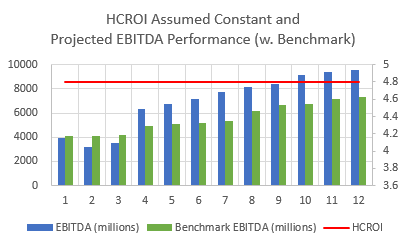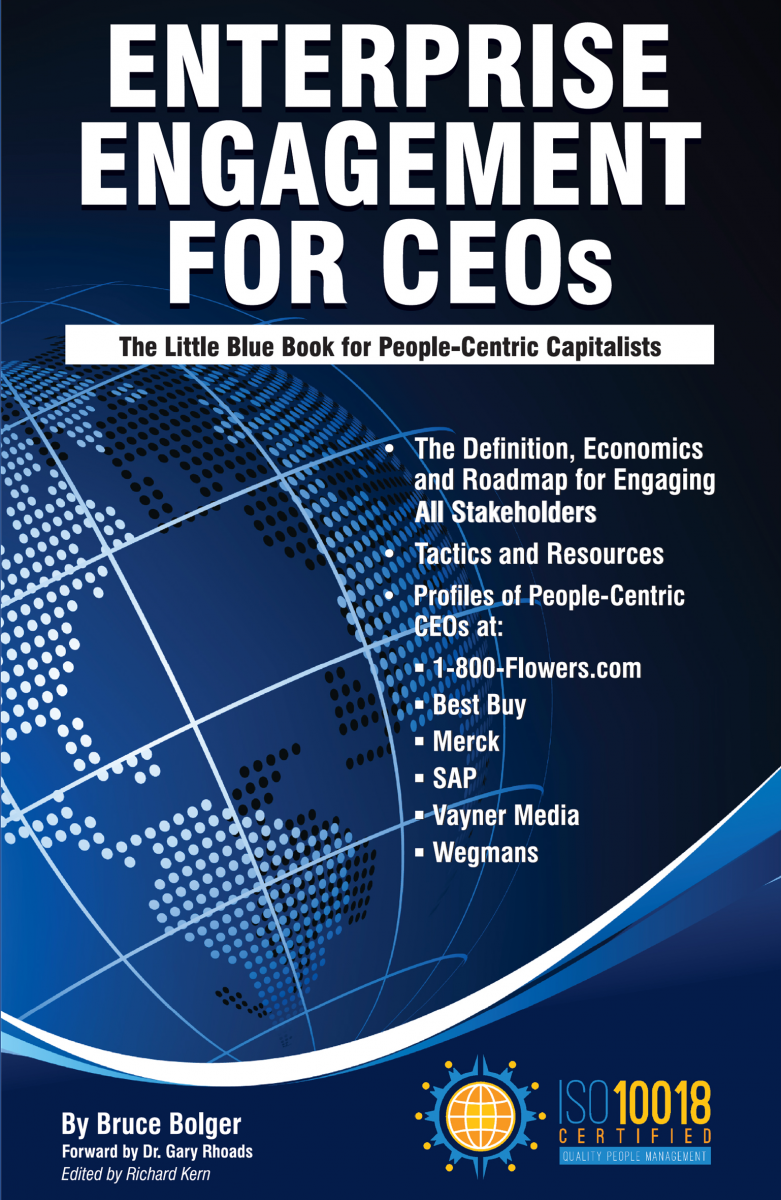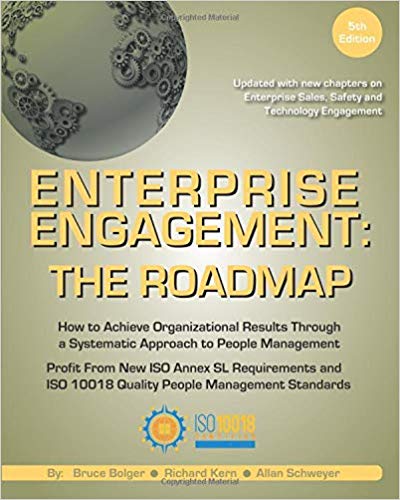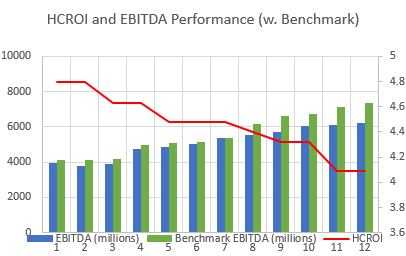According to Dr. Solange Charas, founder of HC MoneyBall and creator of HCMetrix™ – the company’s human capital analytics and benchmarking platform – CEOs and their management lack critical information if they are not monitoring selected key metrics that strongly correlate to corporate financial performance.These metrics include:
• Human Capital Return on Investment (HCROI) – measures the organization’s return on investment in the total expense associated with all human capital programs and activities.
• Human Capital Value Add (HCVA) – indicates the contribution of all human capital activity to profitability.
• Revenues per Employee – a fundamental measure of employee productivity
• Diversity, Equity, and Inclusion Success – the organization’s performance related to the fair treatment of all employees.
• Training and Development Efficiency – the level of investment and success of training and development activities correlated to retention, productivity, mobility, etc.

HCMetrix
™ SaaS-based human capital analytics and benchmarking platform, introduced in 2017, is the only fully configurable means of integrating human capital as well as financial information in one solution to drive better decision-making and manage reporting and disclosures, according to
Dr. Charas, founder.The platform is designed to provide CEOs and senior management, M&A professionals, ISO 30414 practitioners or other professionals involved in governance reporting a powerful platform to track, analyze and report on key human capital metrics and trends (performance indicators) and how they are linked to financial performance.
“We are at the beginning of a new era related to understanding human capital performance analytics and tracking. Based on decades of academic research, the idea of standard approaches or 'algorithms' to calculate key human capital key performance indicators is making its way into the practitioner’s community. Standardized algorithms have recently been showcased by ISO (International Organization for Standardization) and may be adopted by the Securities & Exchange Commission when they issue their anticipated human capital disclosure guidance. This means that all organizations will calculate their human capital performance in a consistent manner, be able to reliably benchmark their performance against standardized data and communicate to stakeholders and employees in a common measurement language. These standard algorithms power the HCMetrix™ platform,” she explains.
CEO’s are missing an important management tool if they or their CFOs or CHROs are not calculating human capital analytics, Dr. Charas asserts. “These metrics are inextricably tied to EBITDA (earnings before income tax, depreciation, and amortization) performance (see example below). For most labor-intensive organizations, human capital expense can be upwards of 60% or more of total operating expense. As human capital expense rises, the leveragability of human capital efficiencies becomes even more critical. C-suite executives now have a way to instantly calculate, monitor and create visual representations of performance against these metrics so they can keep both eyes on the road.”
Analytics-Based Decisions
For most functions in the organization (manufacturing, marketing, finance, sales, operations, fulfilment, etc.), decisions are based on careful analytics and forecasts,” she continues. “In HR, this is rarely done. Most HR decisions are based on either ‘best practices’ that have worked in other firms, or ‘this is how we’ve always done it,’ or even worse, a ‘gut sense or intuition,’ which has the potential of increasing inefficiencies in the HR area. The HCMetrix™ platform is designed to provide senior management the key human capital information they need to:
• Track, benchmark. and correlate human capital measures to other financial performance data.
• Understand efficiencies of HR programs.
• Forecast performance.
• Calculate return-on-investment of people programs correlated to corporate financial performance.
The HCMetrix™ platform makes it easy to visualize trends, correlate these to financial indicators and identify potential opportunities and risks, Dr. Charas explains. The platform allows the user, with simple “drag and drop” functionality, the ability to visually represent the relationship between financial indicators (revenue, expense, EBITDA, etc.) and human capital performance (attrition, retention, productivity, job mobility, diversity, equity, etc.) In addition, the Equity capability allows for companies to track and monitor performance against Equal Employee Opportunity (EEO)-identified job classifications and ethnic, race, and gender categories. The ISO capability allows users to instantly create ISO 30414 human capital conforming reports with a click of the mouse, she adds.
“Most organizations consider HR a balance sheet issue—headcounts and static demographic information. And expenses associated with HR are typically considered a sunk cost. What is unique about our platform is that it is the only solution that allows organizations to track human capital as they would elements of an income statement – creating a dynamic view of human capital correlated to trends and relationships between human capital and other financial indicators, such as revenue, operating income and EBITDA. It’s time we measured the return on investment in human capital rather than thinking about it as a sunk cost or necessary evil.”
Dr. Charas says “it’s tempting for a CEO or CFO to look at the revenue-per-employee statistic and conclude that the best way to improve it is to cut headcount.” But when correlated against other key data, such as HCROI, Human Capital Value Add, retention, attrition, mobility and other performance indicators, the dangers of that way of thinking are exposed. HCMetrix™ allows the user to better understand the relationships between human capital and financial outcomes and avoid making costly decisions.”

The company’s HCMetrix™ database is already populated with the key financial data of all public companies listed on US exchanges, and is being expanded to include public and private companies worldwide for benchmarking purposes, says
Joseph Olewitz, Chief Revenue Officer and Client Satisfaction Officer. “Organizations can benchmark themselves against multiple types of organizations and can easily create custom reports to facilitate analysis using the platform,” he explains.
Charas believes the platform provides a valuable tool for human resources management seeking to demonstrate the value of their people investments to the organization. “This information enhances HR’s credibility in the organization by demonstrating an understanding of the financial impact of HR programs, and managing to the numbers.”
According to Olewitz, the company helps with initial setup and provides unlimited support as part of the license fee. The simple onboarding process requires uploading existing data (in the aggregate). “Subscribers are using the platform for analytics, benchmarking and forecasting within a week. The annual cost is typically less than the cost of one-half of the salary of a data analyst performing the same tasks, and the results are instantaneous, far more detailed and augmented by benchmarked data. Based on the functionality requested, annual fees vary. We offer the solution in Australia, Europe, India and South America, with local staff on-the-ground.”
Specific Application for the M&A Community
“We have found the investor market has a specific interest in our solution to help value human capital as part of the M&A due diligence process,” states Dr. Charas. She says the solution supports four important use cases:
1. Pre-acquisition due diligence: valuing QofEE™ (Quality of Employees) is a critical aspect of the due diligence process, she says. In addition to identifying potential risks, HCMetrix™ provides valuable information about the sustainability of human capital in economic value creation. Just as the financial due diligence focuses on QofE (Qualify of Earnings), acquirers can now understand what they’re buying from a human capital perspective.
2. Post-acquisition integration: identifying “best evidence” policies and practices, scenario testing to optimize combined organization and identify areas for improvement
3. On-going portfolio company performance: monitor performance of the portfolio company over time as well as identify areas to leverage human capital costs/performance, while freeing up the CFO to do other tasks than creating reports; and
4. Private equity (PE) firm-level monitoring of all properties: this allows the PE firm to compare and contrast financial and HC performance of portfolio companies and benchmarks over time and creates reports for governance requirements
The Practical Application of Data
The charts below show an example of how the analytics, forecasting and benchmarking capabilities in HCMetrix™ can be used by business leaders and M&A specialists. Explains Dr. Charas, “Graph A shows an organization’s trend line for HCROI measured against its EBIDTA, compared to the EBITDA (blue and green bars) of a selected set of competitors. A cursory interpretation of this chart is that EBITDA performance is healthy as it is increasing over time, and of no concern. However, we see that starting in month 8 it begins to lag the competitor group. Because we are tracking HCROI, we might conclude that there is a direct relationship between HCROI and EBITDA. In the second graph, Graph B, we forecast what happens to EBITDA when HCROI is kept at a constant, and see that EBITDA performance accelerates and leaves the competition in the dust. An organization not tracking HCROI would not be able to address the reason for the slow-down in EBITDA performance and take actions to address the cause.”
Graph A: Actual Performance
Graph B: Projected Performance with constant HCROI

The New Normal Related to People: Pandemic and Social Justice Considerations
Other than the obvious need to express human capital performance in financial terms, and correlate them to corporate financial performance, the pandemic and the focus on “social justice” in the workplace has accentuated the need to understand the organization’s current performance and how to optimize human capital-related performance in the “new normal.” Charas states: “Covid-19 will definitely accelerate the focus on people. If organizations want to come through these disruptive events, they need to understand the relationship between human capital performance and corporate financial performance (and benchmark this to a set of competitors), and they need to understand the efficiencies of their individual human capital programs.” She explains that analytics must be performed at two levels:
• At the macro-level, companies will want to understand the return on investment in people programs and how that impacts corporate performance and how corporate strategy is supported; and
• At the micro-level, organizations can measure the effectiveness and efficiencies of each of their HR programs to identify high-priority initiatives and how programs support HR strategy.
In a recent report recently published by the Conference Board, “
Covid-10 Reset and Recovery: Using Human Capital Analytics to Understand the Internal Customer Before, During and After a Crisis,” Dr. Charas and co-authors Amanda Popiela and Stela Lupushor identify "three areas of human capital where the use of data is critical in decision-making, particularly during the pandemic: employee engagement and productivity, health and well-being, and diversity & inclusion (D&I).” While it's important to track engagement, she notes that it's not easy to benchmark this against other companies because of the multiple approaches to tracking engagement.
Not only has Covid-19 altered the way management thinks about employees, the social justice movement (Black Lives Matter-initiated) has brought about “a heightened sensitivity to people and an organization’s performance in treating all employees, regardless of race, ethnicity, gender and age, equally. This is why so many companies have changed the name of their initiatives from Diversity and Inclusion to Diversity, Equity, and Inclusion” according to Dr. Charas. “Equity is another way to describe actual and perceived fair treatment of employees. There is ample research supporting the relationship between financial performance and diversity, ‘fairness’ and inclusion. It is critical to not only measure the organization’s performance against diversity and equity, but to be transparent about it. If organizations are doing well, then boast about it. If not, create a strategy to address the inequities and make a commitment to do better by all employees. This helps to build an organization’s employer brand, which is critical to sustainable success and employee retention.” The HCMetrix™ Equity module allows for organizations to understand their Equity profile against six key measures:
• Pay – Are we paying people equitably for equal work?
• Mobility/Advancement – Are we providing the same opportunities for lateral moves and promotions?
• Training – Are we providing the same opportunities for training and development?
• Attrition – Are people leaving us in the same proportions in each ethnic, race and gender category?
• Velocity – Are people being trained and promoted at the same rate?
• Recruiting – Are our candidate slates representative of all ethnic, race and gender classes of the local labor market?
Dr. Charas says that it is her personal passion to contribute to the future of the HR profession by teaching the next generation of HR professionals how to integrate data analytics and financially based decision-making into their management practice. She hopes that the next generation of human resources leaders will be trained in the applications of analytics to address critical business challenges and opportunities and represent the HR function effectively at the management table by translating HR into the language of business – finance.
Dr. Charas has a distinguished career in the human resources field. She held multiple CHRO positions with leading companies as well as senior-level positions at EY and Arthur Andersen. She has an MBA in Accounting and Finance and a Ph.D. in Management from Case Western and now is an adjunct professor teaching human capital courses in the Masters Program at Columbia, New York University and the University of Southern California. She also serves as a Distinguished Principle Research Fellow for The Conference Board. Her CV fills multiple pages of research, citations, articles in leading journals, and public speaking engagements.
For More Information
Joseph Olewitz
Chief Revenue and Client Satisfaction Officer
Tel. +1, 877.210.4544
Master the Principles of Stakeholder Capitalism And Implementation Through Enterprise Engagement
Education, Certifications, and Information to Activate
Stakeholder Capitalism Available Nowhere Else
A complete learning, certification, and information program and a course syllabus for educators.
Training and Certification
Enterprise Engagement Alliance Education: Certified Engagement Practitioner; Advanced Engaged Practitioner, and Certified Engagement Solution Provider learning and certification programs on how to implement Stakeholder Capitalism principles at the tactical level.

Join the EEA to begin your certification process or see our other resources below.
THE ONLY BOOKS ON STAKEHOLDER CAPITALISM IMPLEMENTATION

Enterprise Engagement: The Roadmap 5th Edition
The first and most comprehensive book on Enterprise Engagement and the new ISO 9001 and ISO 10018 quality people management standards. Includes 36 chapters detailing how to better integrate and align engagement efforts across the enterprise. (312 pages, $36.)
OTHER RESOURCES TO ACTUALIZE STAKEHOLDER CAPITALISM
Communities: The Enterprise Engagement Alliance and Advocate and the Brand Media Coalition free resource centers offering access to the latest research, news, and case studies; discounts, promotions, referrals, and commissions, when appropriate to third-party solution providers from participating coalition solution provider members.
Enterprise Engagement Resources: EEXAdvisors.com provides the only curated online marketplace to access hundreds of solution providers in all areas of human capital management and enterprise engagement throughout the world.
Online Overview:
10-minute short course: click here for a 10-minute introduction to Enterprise Engagement and ISO standards from the Coggno.com learning platform.
Services:
• The Engagement Agency at EngagementAgency.net, offering: complete support services for employers, solution providers, and technology firms seeking to profit from formal engagement practices for themselves or their clients, including Brand and Capability audits for solution providers to make sure their products and services are up to date.
• C-Suite Advisory Service—Education of boards, investors, and C-suite executives on the economics, framework, and implementation processes of Enterprise Engagement.
• Speakers Bureau—Select the right speaker on any aspect of engagement for your next event.
• Mergers and Acquisitions. The Engagement Agency’s Mergers and Acquisition group is aware of multiple companies seeking to purchase firms in the engagement field. Contact Michael Mazer in confidence if your company is potentially for sale at 303-320-3777.
Enterprise Engagement Benchmark Tools: The Enterprise Engagement Alliance offers three tools to help organizations profit from Engagement. Click here to access the tools.
• ROI of Engagement Calculator. Use this tool to determine the potential return-on-investment of an engagement strategy.
• EE Benchmark Indicator. Confidentially benchmark your organization’s Enterprise Engagement practices against organizations and best practices.
• Compare Your Company’s Level of Engagement. Quickly compare your organization’s level of engagement to those of others based on the same criteria as the EEA’s Engaged Company Stock Index.
• Gauge Your Personal Level of Engagement. This survey, donated by Horsepower, enables individuals to gauge their own personal levels of engagement.
For more information, contact Bruce Bolger at Bolger@TheEEA.org, 914-591-7600, ext. 230.
 HCMetrix™ SaaS-based human capital analytics and benchmarking platform, introduced in 2017, is the only fully configurable means of integrating human capital as well as financial information in one solution to drive better decision-making and manage reporting and disclosures, according to Dr. Charas, founder.The platform is designed to provide CEOs and senior management, M&A professionals, ISO 30414 practitioners or other professionals involved in governance reporting a powerful platform to track, analyze and report on key human capital metrics and trends (performance indicators) and how they are linked to financial performance.
HCMetrix™ SaaS-based human capital analytics and benchmarking platform, introduced in 2017, is the only fully configurable means of integrating human capital as well as financial information in one solution to drive better decision-making and manage reporting and disclosures, according to Dr. Charas, founder.The platform is designed to provide CEOs and senior management, M&A professionals, ISO 30414 practitioners or other professionals involved in governance reporting a powerful platform to track, analyze and report on key human capital metrics and trends (performance indicators) and how they are linked to financial performance.  The company’s HCMetrix™ database is already populated with the key financial data of all public companies listed on US exchanges, and is being expanded to include public and private companies worldwide for benchmarking purposes, says Joseph Olewitz, Chief Revenue Officer and Client Satisfaction Officer. “Organizations can benchmark themselves against multiple types of organizations and can easily create custom reports to facilitate analysis using the platform,” he explains.
The company’s HCMetrix™ database is already populated with the key financial data of all public companies listed on US exchanges, and is being expanded to include public and private companies worldwide for benchmarking purposes, says Joseph Olewitz, Chief Revenue Officer and Client Satisfaction Officer. “Organizations can benchmark themselves against multiple types of organizations and can easily create custom reports to facilitate analysis using the platform,” he explains.

















